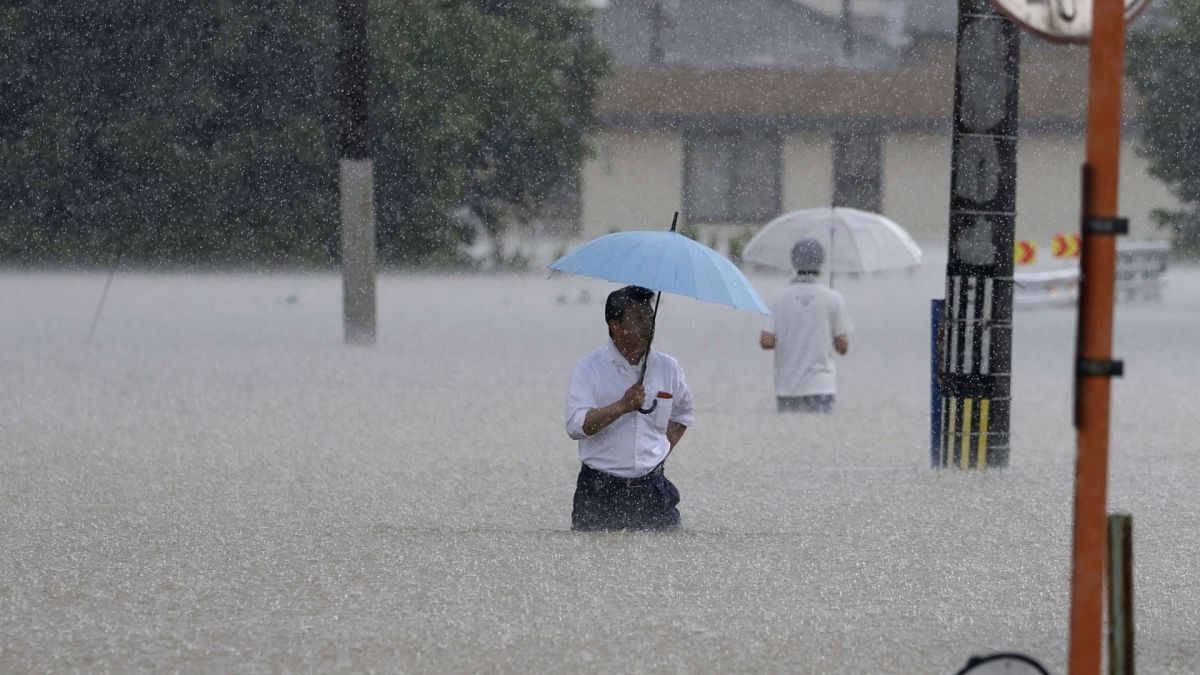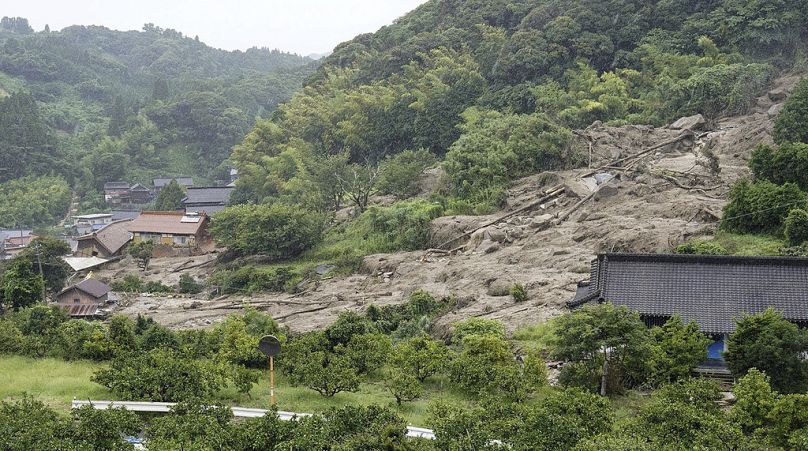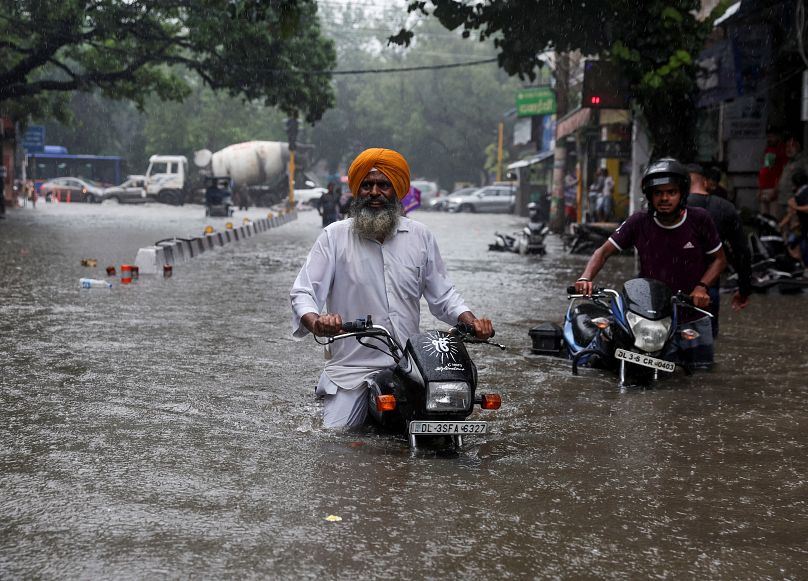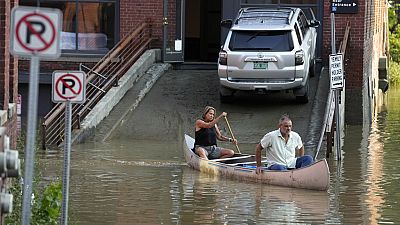More rain is forecast on Tuesday though officials say the peak of the downpours has passed.
Japan’s “heaviest rain ever” has triggered flooding and landslides in the south west of the country.
At least three people have died and several others are missing, according to officials in the prefecture and the Fire and Disaster Management Agency. Hundreds of thousands more were urged to evacuate their homes.
At least nine people are missing after landslides in the Fukuoka and Oita regions.
One woman was killed when a landslide hit a house in the town of Soeda in the Fukuoka prefecture. Two men, one in the city of Kurume and another in the town of Hirokawa, are thought to have died when their vehicles became trapped in rising floodwaters.
Eight rivers burst their banks and dozens of hillsides saturated with rain collapsed into mudslides.
More rain forecast in Japan this week
After more than a week of rain in the region, more torrential downpours have been forecast across the country on Tuesday.
Officials say the peak of the rain has now passed and a warning that was at the highest level of alert has now been downgraded. They are still concerned about the risk of flooding, however.
“The area is very wet due to intermittent rainfall over a week,” land ministry official in charge of rivers Yoshiyuki Toyoguchi told reporters.
He added that, even with a small amount of rain, river levels tend to rise quickly and could contribute to flooding.
Satoshi Sugimoto from the Japan Meteorological Agency said that “this was the heaviest rain ever experienced” in the region and it was “very possible that a disaster has already occurred”.
The country is currently in its annual rainy season but scientists say downpours risk becoming heavier around the world as our warming atmosphere holds more water.
Is climate change causing heavy rain?
Heavy rains have hit various countries around the world in recent days. In India, New Delhi recorded its wettest July day in 40 years as flooding killed at least 22 people.
Deluges triggered flash floods and landslides with the Indian Meteorological Department (IMD) issuing red alerts (the highest level of warning) in the northern states of Himachal Pradesh, Uttarakhand, Punjab and Haryana.
The IMD said that 153 millimetres of rain fell on Sunday in New Delhi - the most precipitation the city has seen in July since 1982.
Japan and India are the latest to see extreme precipitation as concerns grow over the pace of climate change.
Rainfall has become more frequent and intense in most parts of the world since the 1950s, according to the World Weather Attribution (WWA) consortium.
A new study from the WWA based on 70 years of data found that human-caused climate change and more rain falling instead of snow were the two biggest factors.
For every degree of warming, the chance of extreme rainfall 2,000 metres above sea level increases by 15 per cent. This could be catastrophic for mountainous regions and communities downstream.





